|
|
Powhatan Confederacy
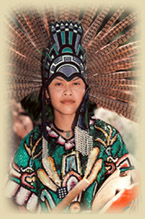
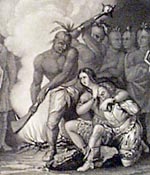
The group of Native North Americans, belonging to the Algonquian branch of the Algonquian-Wakashan linguistic stock. Their area embraced most of tidewater Virginia and the eastern shore of Chesapeake Bay. Wahunsonacock, or Powhatan, as the English called him, was the leader of the confederacy when Jamestown was settled in 1607. The Powhatan are said to have been driven N to Virginia by the Spanish, where their chief, Powhatan's father, subjugated five other Virginia tribes. With Powhatan's own conquests, the empire included, among some 30 peoples, the Pamunkey, Mattapony, Chickahominy, and others likewise commemorated in the names of the streams and rivers of E Virginia. They were sedentary Native Americans, with some 200 settlements, many of them protected by palisades when the English arrived. They cultivated corn, fished, and hunted. Of his many capitals, Powhatan favored Werowocomoco, on the left bank of the York River, where Capt. John Smith first met him in 1608. The English soon seized the best lands, and Powhatan quickly retaliated. To appease him, he was given a crown, and a coronation ceremony was formally performed by Christopher Newport in 1609. Peace with Powhatan was secured when his daughter Pocahontas married (1614) John Rolfe. On Powhatan's death in 1618, Opechancanough, chief of the Pamunkey, became the central power in the confederacy, and he organized the general attack (1622) in which some 350 settlers were killed. English reprisals were equally violent, but there was no further fighting on a large scale until 1644, when Opechancanough led the last uprising, in which he was captured and murdered at Jamestown. In 1646 the confederacy yielded much of its territory, and beginning in 1665 its chiefs were appointed by the governor of Virginia. After the Iroquois, traditional enemies of the confederacy, agreed to cease their attacks in the Treaty of Albany (1722), the tribes scattered, mixed with the settlers, and all semblance of the confederacy disappeared. By the early 1970s some 3,000 Powhatan lived in the eastern part of Virginia. See F. G. Speck, Chapters on the Ethnology of the Powhatan Tribes of Virginia (1928).
 Powhatan Powhatan
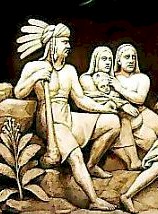

d. 1618, Native North American chief of the Powhatan tribe in Virginia, whose personal name was Wahunsonacock. He greatly extended the dominion of the Powhatan Confederacy and after the marriage (1614) of his daughter Pocahontas to John Rolfe kept peace with the English colonists.
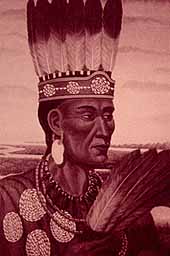
Pocahontas
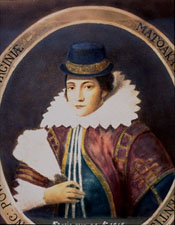
c.1595-1617, Native North American woman, daughter of Chief Powhatan. Pocahontas, meaning playful one (her real name was said to be Matoaka), used to visit the English in Virginia at Jamestown. According to the famous story, she saved the life of the captured Capt. John Smith just as he was about to have his head smashed at the direction of Powhatan. In 1613, Pocahontas was captured by Capt. Samuel Argall, taken to Jamestown, and held as a hostage for English prisoners then in the hands of her father. At Jamestown she was converted to Christianity and baptized as Rebecca. John Rolfe, a settler, gained the permission of Powhatan and the governor, Sir Thomas Dale, and married her in April, 1614. The union brought peace with the Native Americans for eight years. With her husband and several other Native Americans, Pocahontas went to England in 1616. There she was received as a princess and presented to the king and queen. She started back to America in 1617 but was taken ill and died at Gravesend, where she was buried. Pocahontas bore one son, Thomas Rolfe, who was educated in England, went (1640) to Virginia, and gained considerable wealth. See P. L. Barbour, Pocahontas and Her World (1969); G. S. Woodward, Pocahontas (1969).
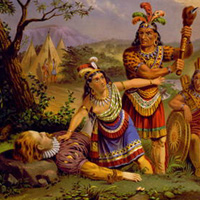
Pocahontas Saving John Smith John Smith 1580-1631
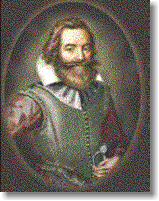 c.1580-1631, English colonist in America, b. Willoughby, Lincolnshire, England. A merchant's apprentice until his father's death in 1596, he thereafter lived an adventurous life, traveling, fighting in wars against the Turks in Transylvania and Hungary, and surviving a period of slavery in Turkey. His own account of these adventures has been doubted by some investigators but has been substantiated in a number of particulars. Returning to England, he invested in the new London Company and in 1606 sailed from London for America with Capt. Christopher Newport. On arrival in Virginia, Smith was named a member of the governing council of the Jamestown settlement, although not permitted to serve immediately, and began his explorations of the surrounding territory. He established trade relations with the Native Americans, drew up a map of Virginia, and finally fell into the hands of the Native American chief Powhatan. Although there is no definite proof of the famous incident of Smith's being saved from death by Powhatan's daughter, Pocahontas, it is considered quite probable that it happened. After his return (1608) to Jamestown, Smith's enemies arrested him, but he was saved from hanging by the arrival of Newport with new settlers. Smith then became president of the council and energetically resisted the company's peremptory demands that the colonists find gold. Maintaining his leadership despite opposition, he carried the colony through periods of intense suffering, hunger, and want (the starving time), remaining firm, tactful, and resourceful. Injured in an explosion, he returned to England in 1609. In 1614 he was sent to New England by a group of London merchants, and returned with a valuable cargo of fish and furs. He emphasized the importance of fishing and upheld the prospects for settlement in New England. On another voyage he was captured by pirates and then by the French, but eventually returned to England. He wrote A True Relation of Virginia (1608), A Map of Virginia (1612), A Description of New England (1616), New England's Trials (1620, 2d ed. 1622), The Generall Historie of Virginia, New-England, and the Summer Isles (1624), An Accidence; or, The Path-Way to Experience (1626; enl. and repub. as A Sea Grammer, 1627), The True Travels, Adventures, and Observations of Captaine John Smith (1630), and Advertisements for the Unexperienced Planters of New England, or Anywhere (1631). See edition of his works by Edward Arber (1884; repr. and ed. by A. G. Bradley, 2 vol., 1910, repr. 1967); biographies by J. G. Fletcher (1928, repr. 1972), Bradford Smith (1953), P. L. Barbour (1964), N. B. Gerson (1966), and E. H. Emerson (1971). c.1580-1631, English colonist in America, b. Willoughby, Lincolnshire, England. A merchant's apprentice until his father's death in 1596, he thereafter lived an adventurous life, traveling, fighting in wars against the Turks in Transylvania and Hungary, and surviving a period of slavery in Turkey. His own account of these adventures has been doubted by some investigators but has been substantiated in a number of particulars. Returning to England, he invested in the new London Company and in 1606 sailed from London for America with Capt. Christopher Newport. On arrival in Virginia, Smith was named a member of the governing council of the Jamestown settlement, although not permitted to serve immediately, and began his explorations of the surrounding territory. He established trade relations with the Native Americans, drew up a map of Virginia, and finally fell into the hands of the Native American chief Powhatan. Although there is no definite proof of the famous incident of Smith's being saved from death by Powhatan's daughter, Pocahontas, it is considered quite probable that it happened. After his return (1608) to Jamestown, Smith's enemies arrested him, but he was saved from hanging by the arrival of Newport with new settlers. Smith then became president of the council and energetically resisted the company's peremptory demands that the colonists find gold. Maintaining his leadership despite opposition, he carried the colony through periods of intense suffering, hunger, and want (the starving time), remaining firm, tactful, and resourceful. Injured in an explosion, he returned to England in 1609. In 1614 he was sent to New England by a group of London merchants, and returned with a valuable cargo of fish and furs. He emphasized the importance of fishing and upheld the prospects for settlement in New England. On another voyage he was captured by pirates and then by the French, but eventually returned to England. He wrote A True Relation of Virginia (1608), A Map of Virginia (1612), A Description of New England (1616), New England's Trials (1620, 2d ed. 1622), The Generall Historie of Virginia, New-England, and the Summer Isles (1624), An Accidence; or, The Path-Way to Experience (1626; enl. and repub. as A Sea Grammer, 1627), The True Travels, Adventures, and Observations of Captaine John Smith (1630), and Advertisements for the Unexperienced Planters of New England, or Anywhere (1631). See edition of his works by Edward Arber (1884; repr. and ed. by A. G. Bradley, 2 vol., 1910, repr. 1967); biographies by J. G. Fletcher (1928, repr. 1972), Bradford Smith (1953), P. L. Barbour (1964), N. B. Gerson (1966), and E. H. Emerson (1971).
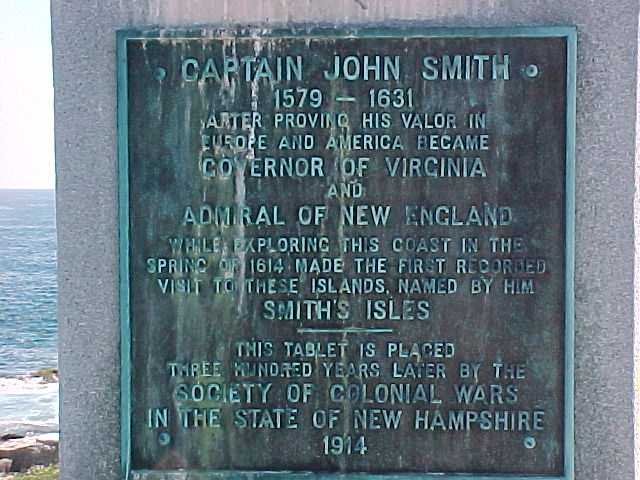 Check these sites for detailed information on Chief Powhatan, Check these sites for detailed information on Chief Powhatan,

The Association for the Preservation of Virginia Antiquities

John Rolfe

Chief Powhatan Site

The Real Pocahontas |
|
|
|
|
 Native American Nations
Native American Nations
